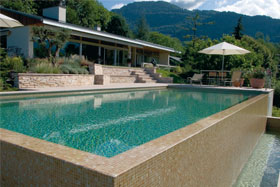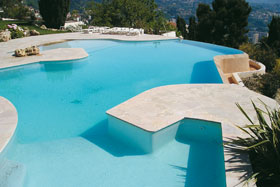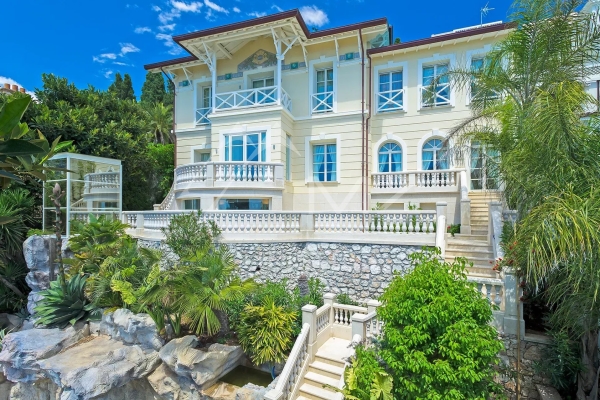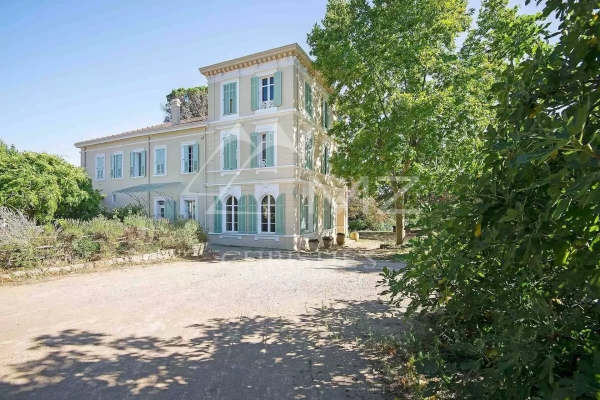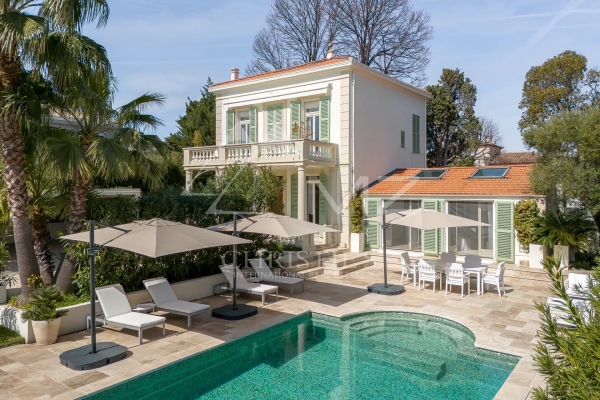To each his own pool
Natural, with overflow effect, even indoor. For all of them, a rule of thumb : to set us dreaming…
Natural, with overflow effect, even indoor. For all of them, a rule of thumb : to set us dreaming…
In 2004, there were 1,056,000 swimming pools in France, including 720,000 built into the ground. Which is 24 % more than in 2001. While the south-east easily tops the list with 55 % of the total, it’s northern France which has scored the highest rate of progress over the past four years (+ 70 %). Members of the trade are optimistic : with 13,000,000 houses surrounded by gardens and 150,000 new homes in the pipeline, they are hoping to see the number of pools double over the next ten years. So who are these happy pool-owners and what are their favourite models ? Generally speaking, they are between 40 and 60 years old and are senior executives (19 %), retired citizens (18 %), employees (16 %) and lastly the self-employed and shop-keepers (11 %).
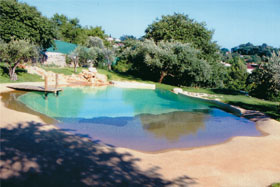
One thing’s for sure : the era of the classic “blue rectangle” has had its day. Nowadays, a pool is linked more closely to a way of life and is harmoniously integrated into the garden, whether large or small. Younger home-owners often opt for the kit possibility. Older ones frequently choose free-standing models in the interest of their grand-children’s safety. Then come pools for which designers have given free rein to their imagination, playing with materials and being creative. The overflow effect, though still very popular, has become quite classic without, however, losing any of its magic. The eye is drawn to the horizon, a line of infinity both near and far, separating the water from the earth. In reality, this kind of pool recuperates the cascading water through a filtering system : it is built so that the water flows straight into an invisible buffer reservoir, situated below the pool (and thus not requiring a skimmer). The price of this illusion is on average 30 % higher than that of a classic pool.
The so-called “landscape” pool is based on traditional techniques : what changes is its shape, more freely designed and virtually without any limits. The pool specialist has to focus here on solving potential difficulties (escarpment, steep drops in the terrain…), respecting the existing site and creating perfect harmony right from scratch. For landscape pools, it’s impossible to give indications of prices. They are custom made projects, and it’s not unusual for a landscape gardener to play a part in laying out the pool’s immediate surroundings.
Some pools are known as “organic” or “natural”. More like ponds than swimming pools, they take the environment into account by providing a fauna/flora eco-system favorable to water. Their benefits seem obvious : bathing in a milieu 100% natural, a landscaped area which lives in tune with the seasons, a total absence of chemicals and, if the job has been well done, reduced maintenance. As for disadvantages : cold water in winter and the need to tend the plants to maintain the balance of the liquid element.
The wooden pool displays its personality through its shape. Warm, resistant and pleasing to the eye, wood can be used for the entire pool or for more or less emphatic touches ; surround, deck, stairs, pontoon… The choice of the wood will depend on environmental factors such as a severe climate : pine, fir or cedar for tradition, teak, iroko or ipé for exoticism. The first require treatment whereby they are hermetically sealed and the air in the wood is replaced by fungicides and insecticides. The second are not subject to rot and therefore require no particular attention. It’s worth knowing that all kinds of wood have one point in common : as they age, they turn grey.
If, over the years, the indoor swimming pool has become an extra “room”, it must also be considered as a room apart. Its environmental constraints are unique : this is not simply a pool installed indoors. Forget the concept of “standard”, especially if it is to be integrated into an existing building. The first necessity is to have a ceiling high enough to allow for satisfactory circulation of the air. Alternatively, a ventilation and humidity absorption system has to be installed to prevent ultra-rapid deterioration of the walls. Secondly, one has to insulate the walls and flooring and install an air/water heating system that is efficient and properly regulated. As the indoor pool is tailor-made, it will be about twice as expensive to build, maintain and use as a classic model. By way of compensation, you will use it all year round, which is, of course, a considerable bonus.
Carnet
Carré Bleu, Aqua’space, 1063 avenue Maréchal-Juin, 06250 Mougins. 04 92 28 07 01. Gérard Gay, Les Oasis de Plan d’Eau, quartier les Couestes, 710 rue Léon-Amic, 83390 Cuers. 04 94 28 56 97. Piscines Alessandra, 616 avenue Saint-Martin, 06250 Mougins. 04 92 28 31 20. Wood-line, 00 32 69 25 33 63 et sur www.wood-line.info
By Cécile Olivéro - photos : press.
